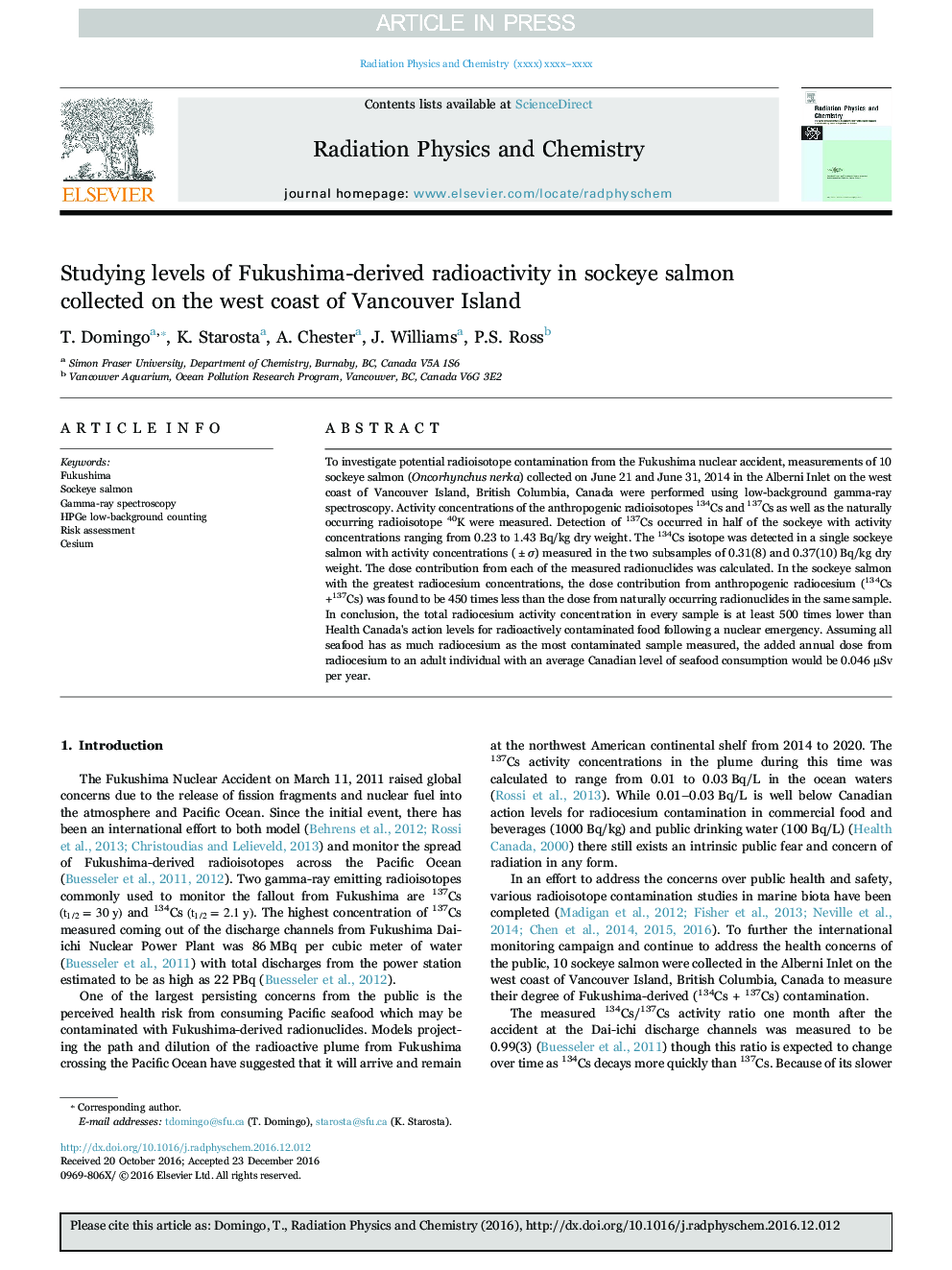| Article ID | Journal | Published Year | Pages | File Type |
|---|---|---|---|---|
| 5499076 | Radiation Physics and Chemistry | 2017 | 4 Pages |
Abstract
To investigate potential radioisotope contamination from the Fukushima nuclear accident, measurements of 10 sockeye salmon (Oncorhynchus nerka) collected on June 21 and June 31, 2014 in the Alberni Inlet on the west coast of Vancouver Island, British Columbia, Canada were performed using low-background gamma-ray spectroscopy. Activity concentrations of the anthropogenic radioisotopes 134Cs and 137Cs as well as the naturally occurring radioisotope 40K were measured. Detection of 137Cs occurred in half of the sockeye with activity concentrations ranging from 0.23 to 1.43 Bq/kg dry weight. The 134Cs isotope was detected in a single sockeye salmon with activity concentrations (±Ï) measured in the two subsamples of 0.31(8) and 0.37(10) Bq/kg dry weight. The dose contribution from each of the measured radionuclides was calculated. In the sockeye salmon with the greatest radiocesium concentrations, the dose contribution from anthropogenic radiocesium (134Cs+137Cs) was found to be 450 times less than the dose from naturally occurring radionuclides in the same sample. In conclusion, the total radiocesium activity concentration in every sample is at least 500 times lower than Health Canada's action levels for radioactively contaminated food following a nuclear emergency. Assuming all seafood has as much radiocesium as the most contaminated sample measured, the added annual dose from radiocesium to an adult individual with an average Canadian level of seafood consumption would be 0.046 μSv per year.
Related Topics
Physical Sciences and Engineering
Physics and Astronomy
Radiation
Authors
T. Domingo, K. Starosta, A. Chester, J. Williams, P.S. Ross,
